Clinical response to azacitidine in MDS is associated with distinct DNA methylation changes in HSPCs
- PMID: 40360497
- PMCID: PMC12075701
- DOI: 10.1038/s41467-025-59796-x
Clinical response to azacitidine in MDS is associated with distinct DNA methylation changes in HSPCs
Abstract
Hypomethylating agents are frontline therapies for myelodysplastic neoplasms (MDS), yet clinical responses remain unpredictable. We conducted a phase 2 trial comparing injectable and oral azacitidine (AZA) administered over one or three weeks per four-week cycle, with the primary objective of investigating whether response is linked to in vivo drug incorporation or DNA hypomethylation. Our findings show that injection results in higher drug incorporation, but lower DNA demethylation per cycle, while global DNA methylation levels in mononuclear cells are comparable between responders and non-responders. However, hematopoietic stem and progenitor cells (HSPCs) from responders exhibit distinct baseline and early treatment-induced CpG methylation changes at regulatory regions linked to tissue patterning, cell migration, and myeloid differentiation. By cycle six-when clinical responses typically emerge-further differential hypomethylation in responder HSPCs suggests marrow adaptation as a driver of improved hematopoiesis. These findings indicate that intrinsic baseline and early drug-induced epigenetic differences in HSPCs may underlie the variable clinical response to AZA in MDS.
© 2025. The Author(s).
Conflict of interest statement
Competing interests: F.V. is affiliated with OmniOmics.AI Pty Ltd. C.F. is an advisory board member at Amgen, AbbVie, Adaptive Biotech, BeiGene, Pfizer, Otsuka, and Jazz, a consultant at Novotech, and received speaker fees from Amgen, Pfizer, Servier, BMS, and Astella. D.H. has consultancy agreements with GlaxoSmithKline and Pharming Corp. M.H. is a consultant/advisory board member at Roche, Gilead, Otsuka, Janssen, Beigene, and Takeda. M.N.P. received research funding and/or provision of drug for clinical trials (to institution) from AstraZeneca, BRII Biosciences, Celgene/BMS, CSL Behring, Eli Lilly, Emergent Biosciences, Gilead Pharmaceuticals, GlaxoSmithKline, Grifols, Janssen/Johnson and Johnson, Takeda, ViiV Pharmaceuticals and has advisory roles with Celgene/BMS, Gilead Pharmaceuticals, and ViiV Pharmaceuticals. J.E.P. received research funding and/or provision of drug for clinical trials (to institution) from Celgene/BMS, Astex, Verastem Oncology and received honoraria from Abbvie as an advisory board member. The remaining authors declare no competing interests.
Figures
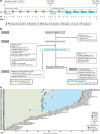
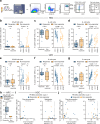
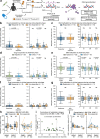
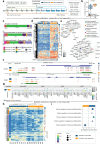
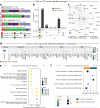

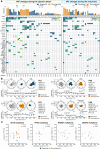
References
-
- Carr, R. M. & Patnaik, M. M. Genetic and epigenetic factors interacting with clonal hematopoiesis resulting in chronic myelomonocytic leukemia. Curr. Opin. Hematol.27, 2–10 (2020). - PubMed
-
- Woll, P. S. et al. Myelodysplastic syndromes are propagated by rare and distinct human cancer stem cells in vivo. Cancer Cell25, 794–808 (2014). - PubMed
Publication types
MeSH terms
Substances
Grants and funding
LinkOut - more resources
Full Text Sources
Medical
Research Materials
Miscellaneous

